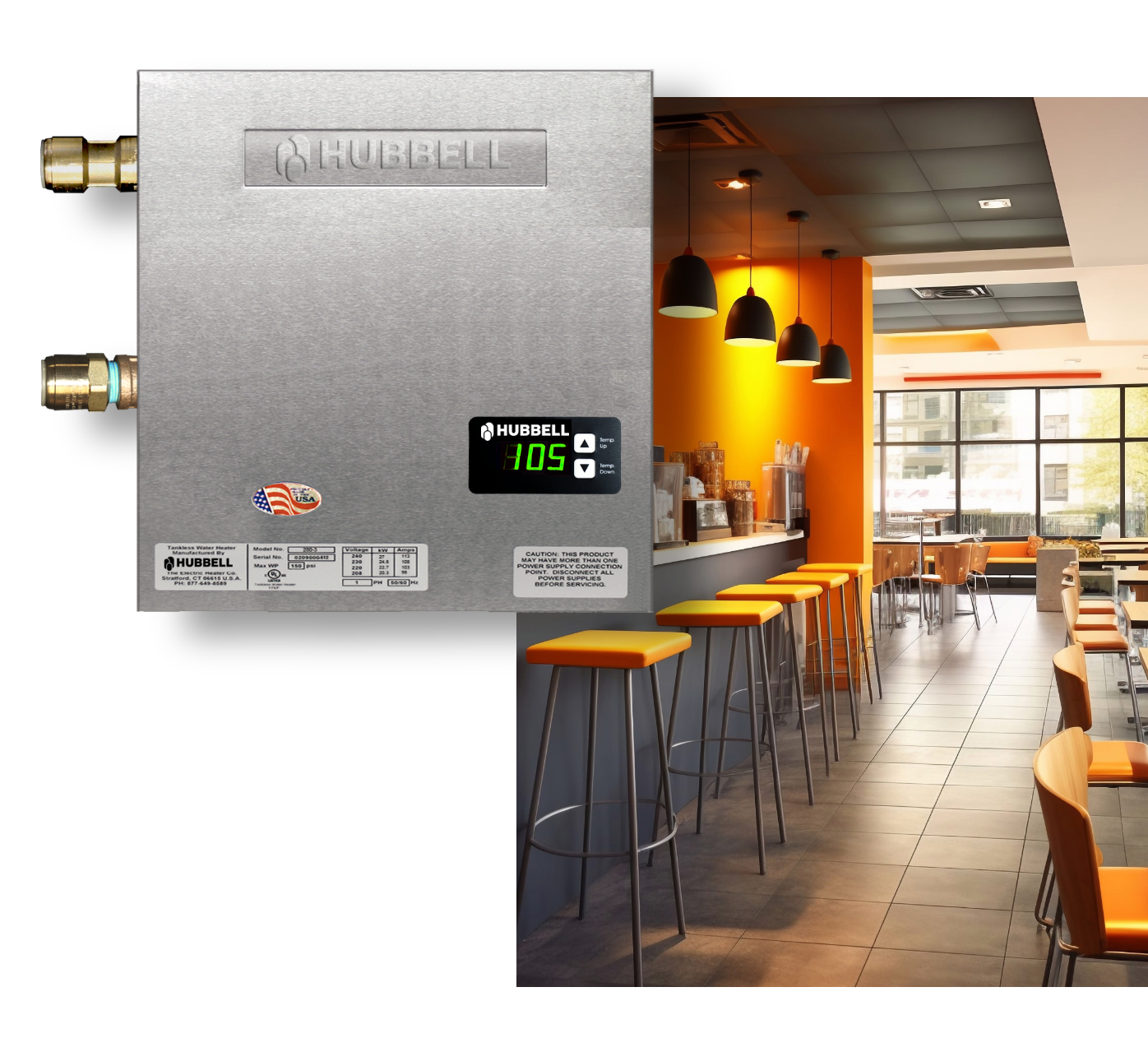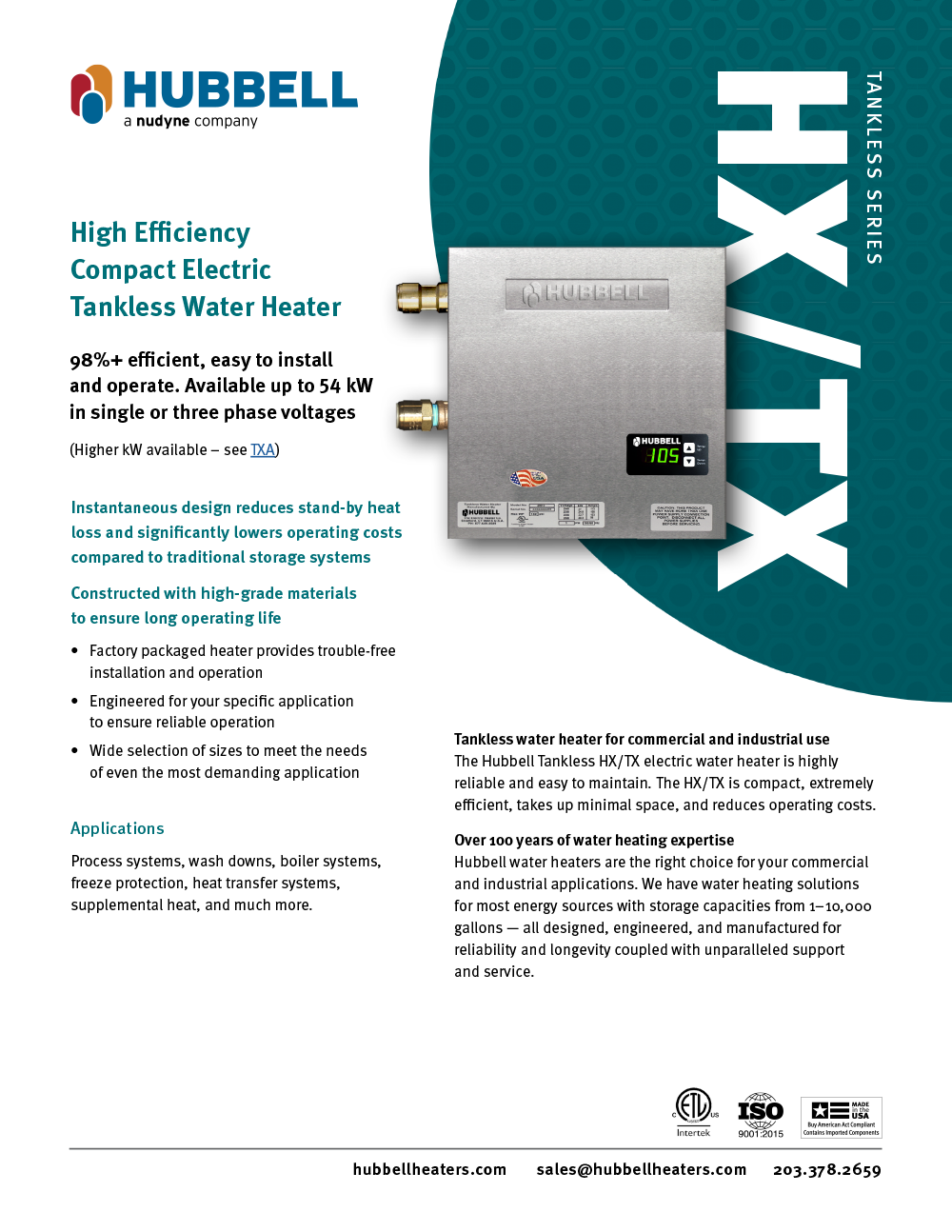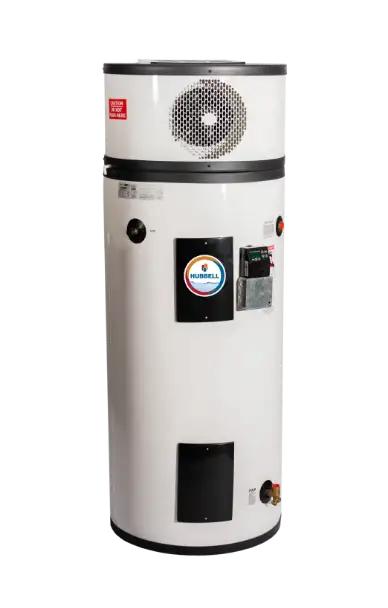Tankless Series
HX/TX
High Efficiency Compact Electric Tankless Water Heater
98%+ efficient, easy to install and operate. Available up to 54 kW in single or three phase voltages.

98%+ HIGH EFFICIENCY DESIGN
WIDELY CUSTOMIZABLE
DIGITAL TEMPERATURE CONTROLS
OPTIONAL BACNET MODULE
HIGH GRADE MATERIALS FOR LONGEVITY
STREAMLINED INSTALLATION
Applications
Process systems, wash downs, heat pump back-up, boiler systems, emergency safety wash systems, freeze protection, heat transfer systems, supplemental hot water, point-of-use hot water, and much more.
Tankless Series
HX/TX
High Efficiency Compact Electric Tankless Water Heater
98%+ efficient, easy to install and operate. Available up to 54 kW in single or three phase voltages.
98%+ HIGH EFFICIENCY DESIGN
WIDELY CUSTOMIZABLE
DIGITAL TEMPERATURE CONTROLS
OPTIONAL BACNET MODULE
HIGH GRADE MATERIALS FOR LONGEVITY
STREAMLINED INSTALLATION
Applications
Process systems, wash downs, heat pump back-up, boiler systems, emergency safety wash systems, freeze protection, heat transfer systems, supplemental hot water, point-of-use hot water, and much more.
HX/TX Overview
Technical Documents
Request Info about the HX/TX
You might also be interested in ...
Hubbell has a water heater for almost every application. Take a look at other options.








